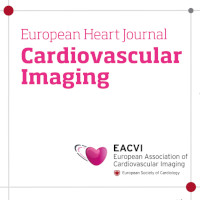Auteurs
Rahoual G, Zeitouni M, Charpentier E, Ritvo PG, Rouanet S, Procopi N, Boukhelifa S, Charleux P, Guedeney P, Kerneis M, Barthélémy O, Silvain J, Montalescot G, Redheuil A, Collet JP.
Abstract
Background
Premature coronary artery disease (CAD) is an aggressive disease with multiple recurrences mostly related to new coronary lesions.
Aims
This study aimed to compare coronary plaque characteristics of individuals with premature CAD with those of incidental plaques found in matched individuals free of overt cardiovascular disease, using coronary computed tomography angiography (CCTA).
Methods
Of 1552 consecutive individuals who underwent CCTA, 106 individuals with history of acute or stable obstructive CAD ≤45 years were matched by age, sex, smoking status, cardiovascular heredity, and dyslipidaemia with 106 controls. CCTA were analysed for Coronary Artery Disease Reporting and Data System score, plaque composition, and high-risk plaque (HRP) features, including spotty calcification, positive remodelling, low attenuation, and napkin-ring sign.
Results
The characteristics of 348 premature CAD plaques were compared with those of 167 incidental coronary plaques of matched controls. The prevalence of non-calcified plaques was higher among individuals with premature CAD (65.1 vs. 30.2%, P < 0.001), as well as spotty calcification (42.5 vs. 17.9%, P < 0.001), positive remodelling (41.5 vs. 9.4%, P < 0.001), low attenuation (24.5 vs. 3.8%, P < 0.001), and napkin-ring sign (1.9 vs. 0.0%). They exhibited an average of 2.2 (2.7) HRP, while the control group displayed 0.4 (0.8) HRP (P < 0.001). Within a median follow-up of 24 (16, 34) months, individuals with premature CAD and ischaemic recurrence (n = 24) had more HRP [4.3 (3.9)] than those without ischaemic recurrence [1.5 (1.9)], mostly non-calcified with low attenuation and positive remodelling.
Conclusions
Coronary atherosclerosis in individuals with premature CAD is characterized by a high and predominant burden of non-calcified plaque and unusual high prevalence of HRP, contributing to disease progression with multiple recurrences. A comprehensive qualitative CCTA assessment of plaque characteristics may further risk stratify our patients, beyond cardiovascular risk factors.



